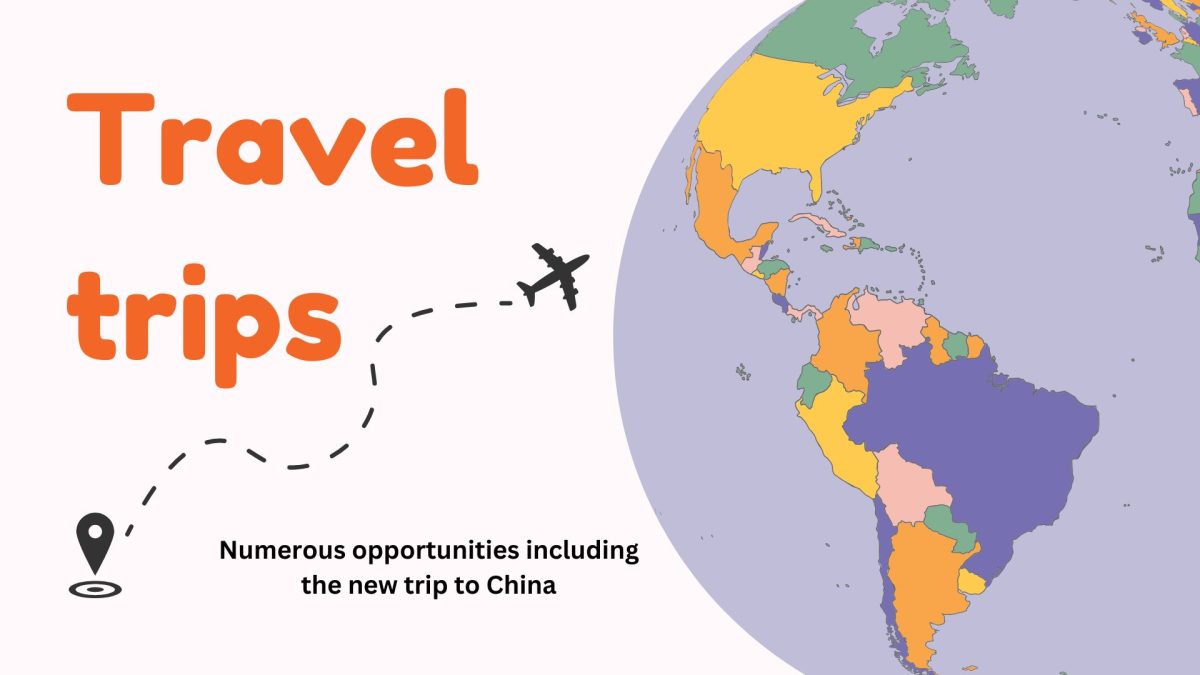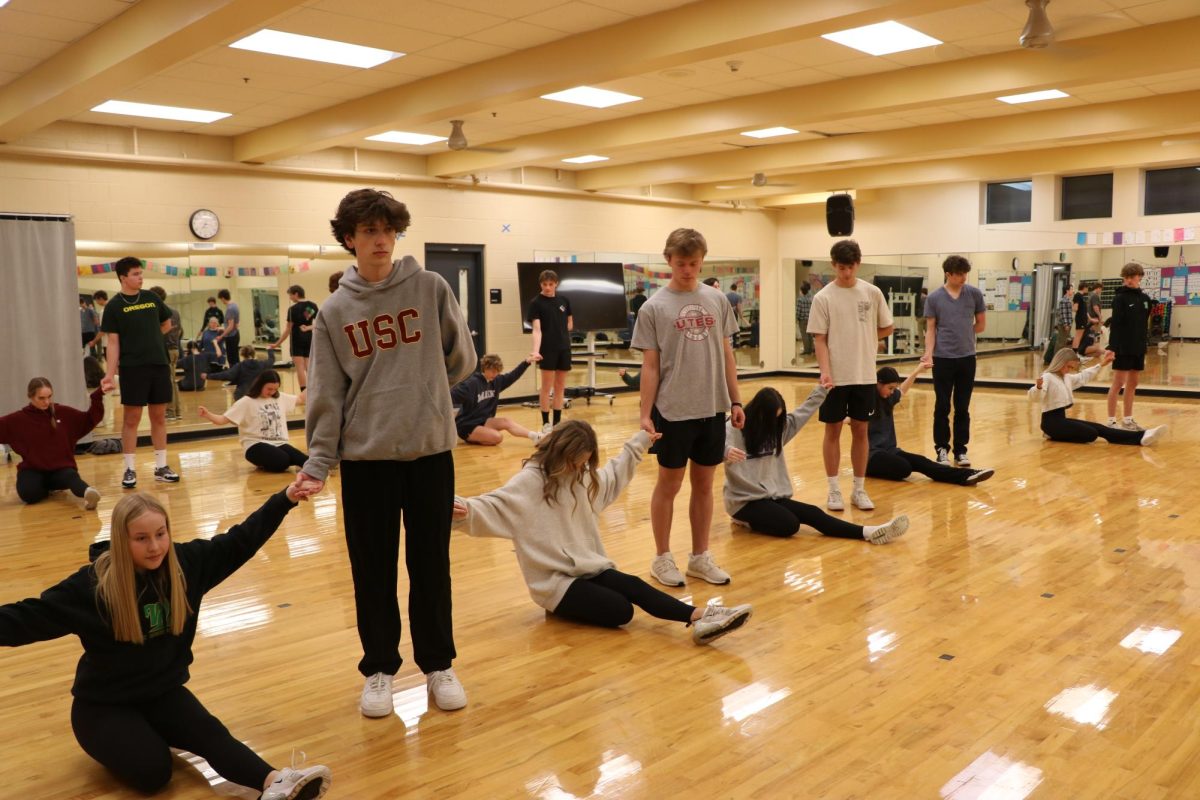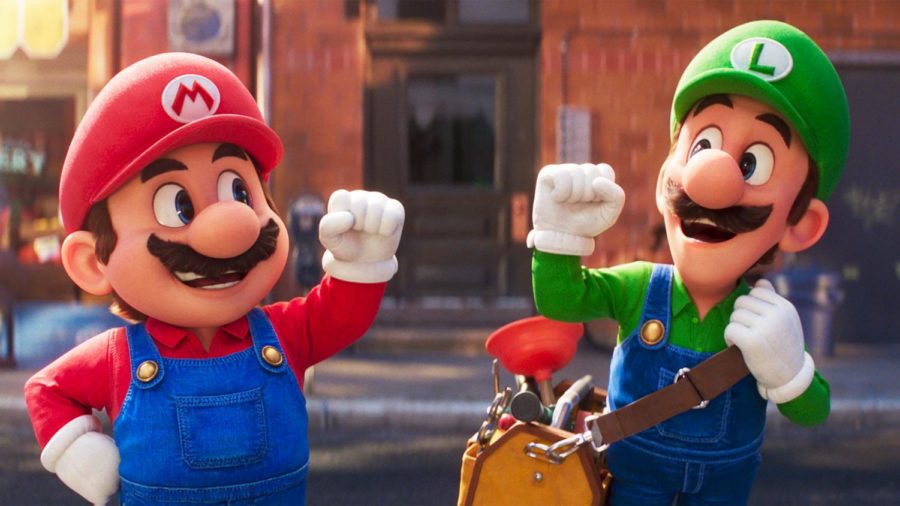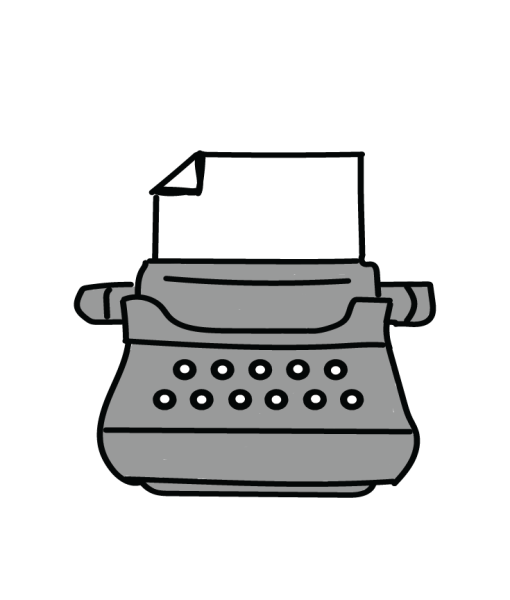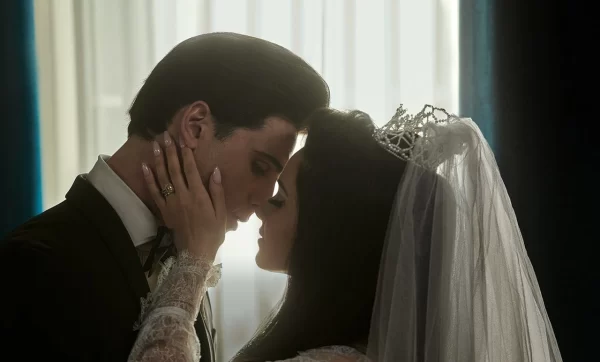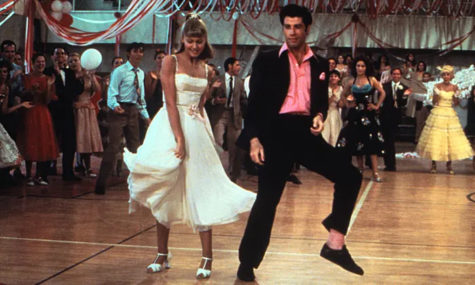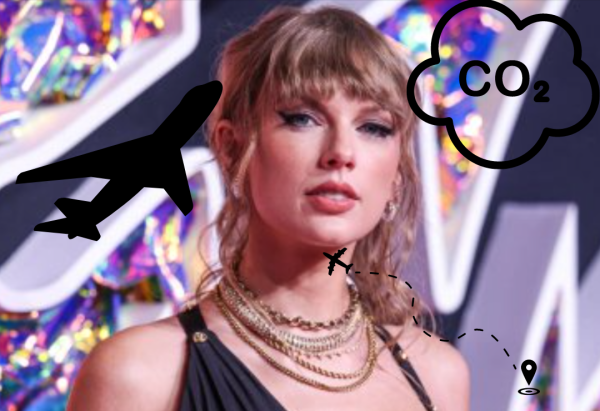Nintendo powers up the box office
Courtesy of Nintendo and Universal Studios. The protagonist of both the film and video game franchise Mario on the right, celebrating with his brother Luigi.
With video game adaptations becoming a more promising and profitable endeavor, it was only a matter of time before one of the dominating forces in the video game industry seeks to capitalize on this popularity— Nintendo.
Nintendo is a studio that has created some of the most influential characters in the gaming industry, one notable example being Mario, from “Super Mario Bros.” (1985) and the franchise of the same name. An Italian plumber, Mario, goes on adventures across multiple worlds, sometimes with his brother Luigi, typically to save Princess Peach from the evil Koopa King, Bowser. It is this idea that Nintendo, in collaboration with Illumination Entertainment, adapted the game into “The Super Mario Bros Movie.”
With a franchise spanning nearly 40 years and with 23 mainline games released, as well as countless spinoffs, adapting a game series as big as “Super Mario Bros.” was certainly no small task. And yet, after watching the hour and a half long film in the theater, it was pleasantly surprising. The life and energy of the game was well incorporated and translated to a film environment. There were several references to the numerous games, some dating all the way back to the very beginning of the franchise with jokes such as, “The princess is in another castle,” a line from the very first game.
There are also several plotlines related to the modern games, one notable one being the character of Bowser in this film. Bowser’s character was primarily a reference to his role in the game “Super Mario Odyssey,” a modern version released in 2017. Alongside Bowser, there is a gag throughout the film involving a luma, a species introduced in the “Super Mario Galaxy” series from 2007.
Along with references to the numerous “Super Mario Bros.” games, the film also has a very curious segment not included in the original games, but the franchise’s cousin, “Donkey Kong.”
“Donkey Kong” was the original title of the game Mario appeared in, where Mario battles a giant gorilla named Donkey Kong, to save a woman named Pauline, who was held hostage. While there are clear nods to other Nintendo titles and characters, “Donkey Kong” is the only other franchise that is directly incorporated into the film, with its own unique characters and story elements appearing.
The section based on “Donkey Kong” was a drastic departure from the source material, with the follow up scene returning directly to the Mario franchise, with the most successful Mario spinoff being directly referenced. This section in particular is based on “Mario Kart,” a racing game that has achieved a similar level of popularity. This section provides a decent portion of the film’s action, with the characters Mario, Peach, Toad, and Donkey Kong battling several of Bowser’s Minions in kart-on-kart combat. The incorporation of something as gameplay oriented as “Mario Kart” left the recreation feeling inaccurate to the source material, ultimately making this section of the film feel forced and novelty without much substance, unlike other references in the film.
The main fault with this movie involves something similar to the forceful nature of the “Mario Kart” segment, and it’s the incorporation of the platforming element into the film. In the original Mario games, platforming refers to the various obstacle courses filled with traps and enemies that Mario has to traverse, using a variety of different movement mechanics.
Platforming is an essential part of the franchise, every mainline game featuring platformer obstacles and various mechanics based around them. These mechanics are what make Mario games standout, however, in a film environment, they are extremely unnecessary. One primary example is the Mushroom Kingdom, a main location of interest, has almost all of its infrastructure based around platforming. This leaves it feeling unorthodox and impractical, and although partially accurate to the game, actually goes against a majority of the depictions of the Mushroom Kingdom, which do not feature platforming as a part of its central infrastructure.
One thing to note about the film is the sheer amount of people from various age groups were present at the screening. There were individuals potentially no older than nine years old. However, fully grown adults were purchasing tickets for themselves and themselves alone. It’s truly a testament to how something can bring individuals together from all ages, something that transcends generational differences.
It’s rare enough for me personally to see a theater populated with grown adults and children attending on their own. It is even more rare to see their reactions were largely the same. Both children and adults laughed alongside each other at the same jokes, both cheered for the same righteous scenes, and were all equally humored. The film’s ability to maintain a sense of humor that appealed to both major audiences was impressive. There were almost no immature jokes that would make adults roll their eyes, while the jokes that were told were simple enough for the younger audience.
The cast of this film was expertly chosen, with some of my favorite roles being Jack Black as Bowser, Seth Rogen as Donkey Kong, and Charlie Day as Luigi. And while there was certainly a lot of controversy around a specific casting decision, Chris Pratt as Mario was an enjoyable and acceptable performance. The voice Pratt gave the character was reminiscent of some older Mario television and film, specifically the live action productions, leaning more towards a Brooklyn accent over Italian. A fitting decision, considering that Mario and Luigi both live in Brooklyn.
In general, “The Super Mario Bros. Movie” was a film that perfectly encapsulates the feeling that one would experience when playing a Mario game, the audience agreeing. On Rotten Tomatoes, the film received a 59% by the critics and a 96% by the audience, a fitting score when considering the perspectives of both. The story has its faults and it is overall very basic, but the film is very enjoyable regardless of its problems.
This film was made for the fans of Mario, the millions of individuals who grew up playing the games and for the million more who will continue to enjoy them. It is in that regard that “The Super Mario Bros. Movie” has succeeded. Few films have left audiences applauding in joy at the end, the audience typically left in silence after the credits rolled. This film had every row of the audience erupted into applause. I was certainly applauding as well, and I am looking forward to the teased sequel in the post credit sequence. To anyone who has any love of the Mario franchise, or someone who appreciates video games wanting a fun watch with a friend, you will have a super time.
Rating: 8/10
Your donation will support the student journalists of West Linn High School. Your contribution will allow us to continue to produce quality content by purchasing equipment, software, and continuing to host our website on School Newspapers Online (SNO).

Jack Deason, junior, is reporting for wlhsNOW for the first time. He writes in his freetime, plays video games with his friends, and has very passionate...

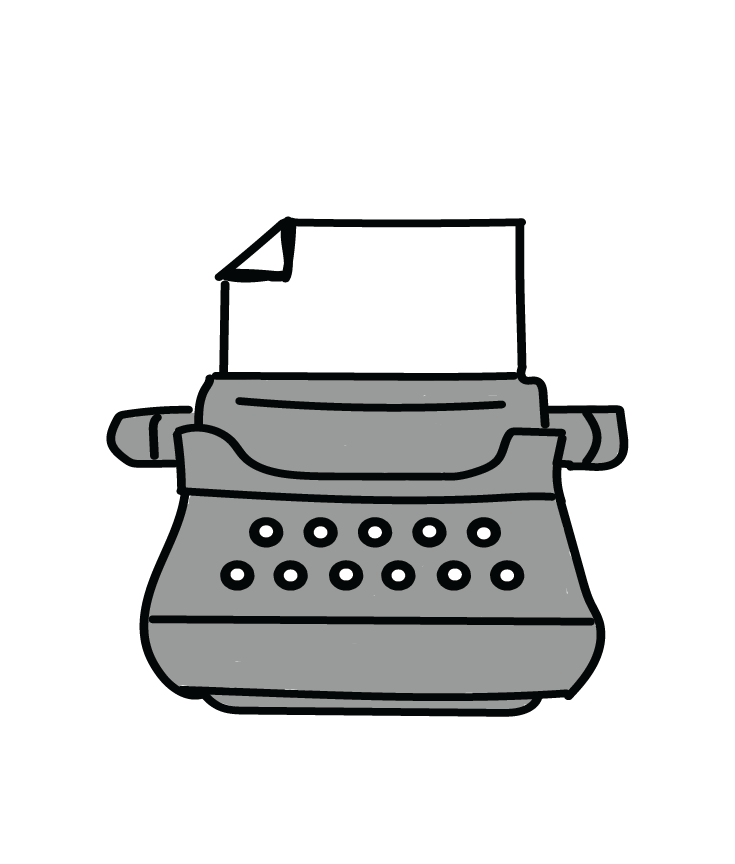
























![Game, set, and match. Corbin Atchley, sophomore, high fives Sanam Sidhu, freshman, after a rally with other club members. “I just joined [the club],” Sidhu said. “[I heard about it] on Instagram, they always post about it, I’ve been wanting to come. My parents used to play [net sports] too and they taught us, and then I learned from my brother.”](https://wlhsnow.com/wp-content/uploads/2024/03/MG_7715-2-1200x800.jpg)





![The teams prepare to start another play with just a few minutes left in the first half. The Lions were in the lead at halftime with a score of 27-0. At half time, the team went back to the locker rooms. “[We ate] orange slices,” Malos said. “[Then] our team came out and got the win.”](https://wlhsnow.com/wp-content/uploads/2023/10/IMG_2385-1200x800.jpg)





![At the bottom of the third inning, the Lions are still scoreless. Rowe stands at home plate, preparing to bat, while Vandenbrink stands off to the side as the next batter up. Despite having the bases loaded, the team was unable to score any runs. “It’s just the beginning of the season. We’re just going to be playing out best by June, [and] that’s where champions are,” Rowe said.](https://wlhsnow.com/wp-content/uploads/2024/03/IMG_3077-1200x900.jpg)







